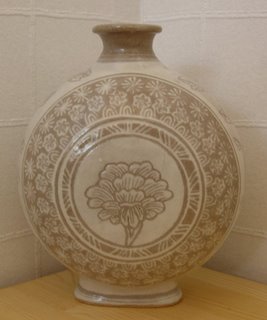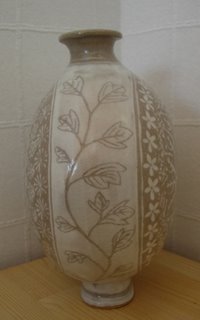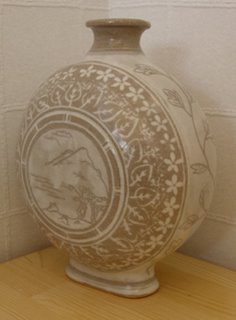
I checked out the Mishima technique with my new work from the Nippon Tougei Club in Tokyo.
This style of pottery is named after a place in Japan that has nothing to do with its production: the Mishima style (slip inlay style).
As far back as 1636, there was a certain calendar published at the Grand Shrine of Mishima written in little squiggly "kana" (one of Japan 3 languages) lines. Because the "rope curtain" designs resembled the lines of the calendar, works of this pattern came to be known as Mishima.
One side of the vase with a Peony flower design.

The style itself goes back to Korea's Koryo Period (935-1392) when bowls decorated in this way were known as "Korai-jawan" or "Korai" tea bowls. These were inlaid with various motifs such as floral and animal depictions.
I engraved on the other side a Japanese landscape in the white slip surrounded with stamps decorations with the white slip inlay.

A potter would incise the design in the body, fill it in with contrasting colored clay or slip and then cover it with a transparent glaze. This technique peaked in Korea in the 12th-13th-century Koryo celadons, deemed "first under heaven." It's also referred to as "zogan". Another inlay style is called reverse inlay. This is where the potter cuts away the background, leaving the design in relief, then the background is brushed over with a slip and the excess is scraped away.

Another view of the vase with a flask shape.
The size is: 18cm x 14cm x 8.5cm.


0 Comments:
Post a Comment
<< Home